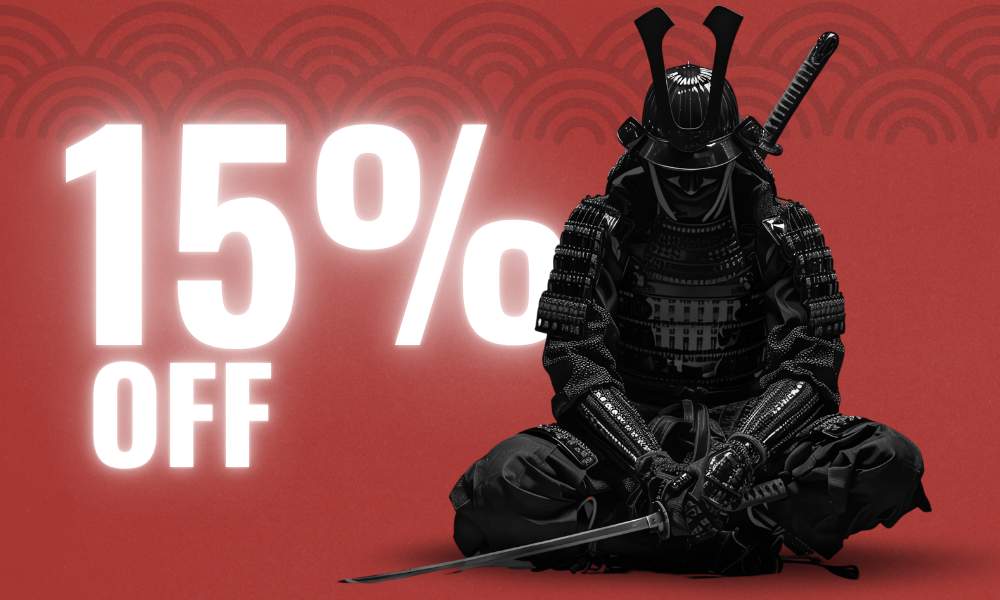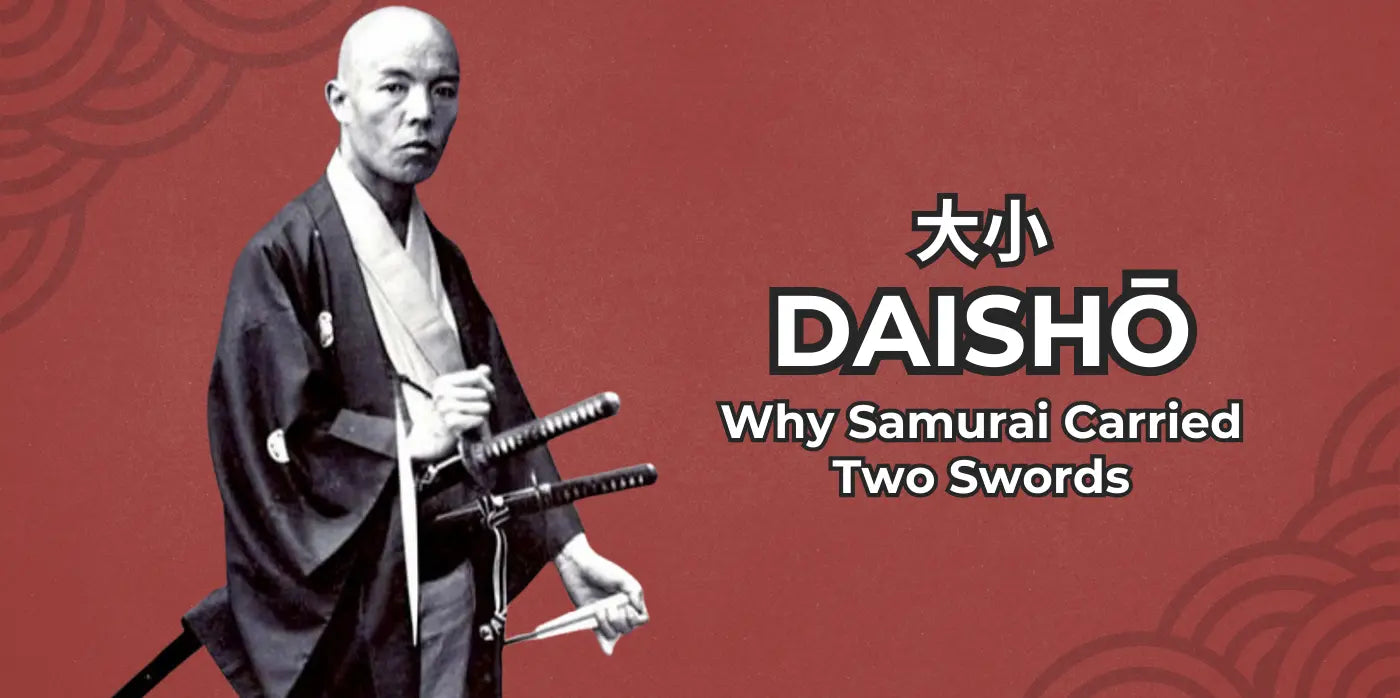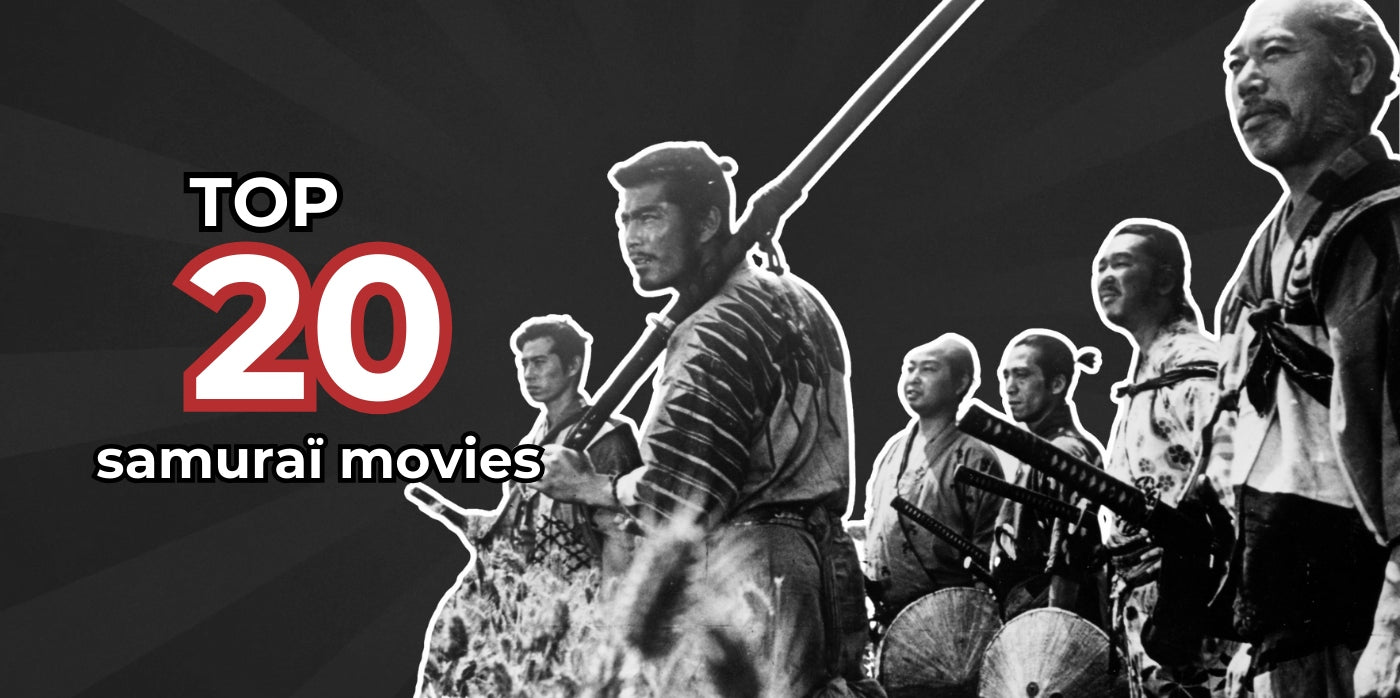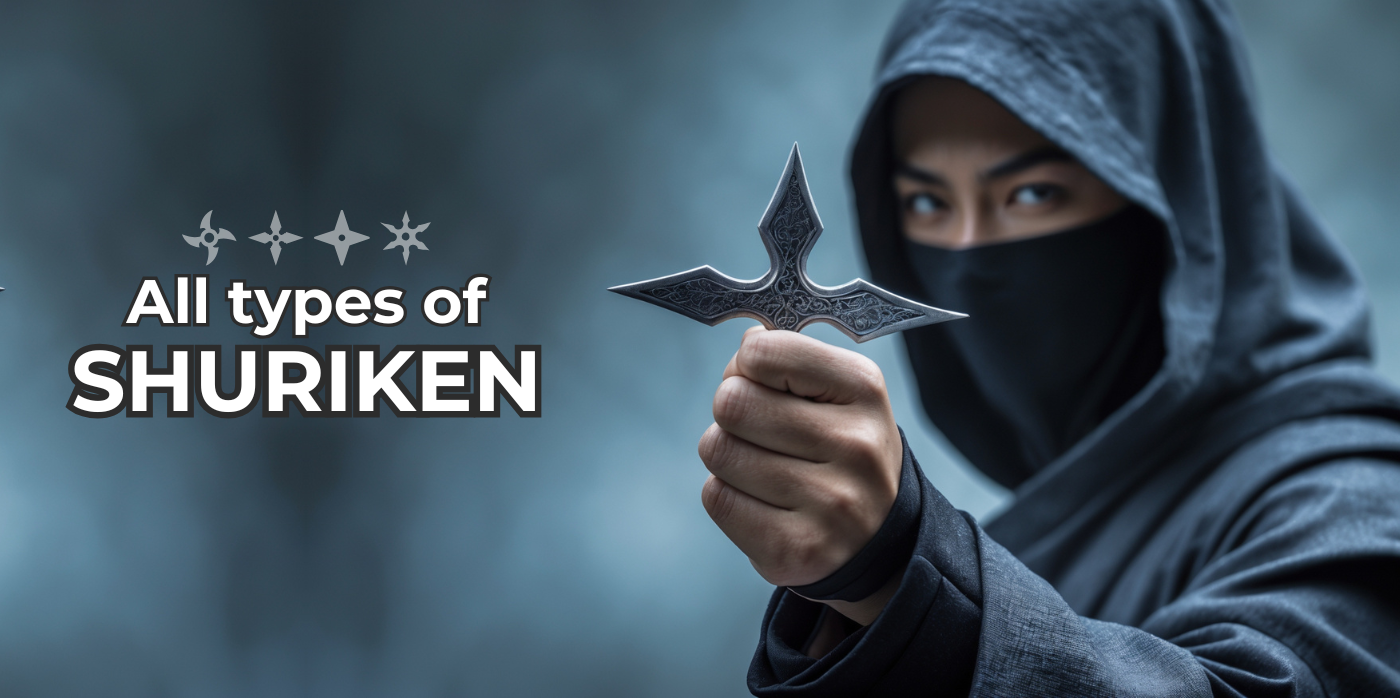What is the daishō
The daishō (大小) is the traditional two-sword set carried by samurai in feudal Japan. The term means “big-little” (大 dai = big, 小 shō = small), referring to the pairing of a katana (long sword) and a wakizashi (short sword), or sometimes a tanto.

Origins of the Daishō
The samurai’s tradition of carrying two swords, known as daishō, was not just a matter of combat efficiency but a deep-rooted cultural practice that defined their status and discipline. To fully understand its significance, we must first examine the evolution of samurai weaponry and their adaptation to changing battle strategies.
During the Heian period, the tachi was the primary sword, designed specifically for mounted combat. It was long, elegantly curved, and worn edge-down, allowing for swift and powerful downward strikes against enemies on foot. However, as warfare evolved and battles increasingly took place on open fields, the uchigatana replaced the tachi as the standard samurai weapon. Unlike the tachi, the uchigatana was worn edge-up, making it quicker to draw and strike in a single motion, which proved invaluable in duels and large-scale infantry battles.
Alongside the uchigatana, the wakizashi emerged as a secondary sword. Shorter in length, the wakizashi was the samurai’s constant companion, carried at all times, even indoors. Unlike the katana, which had to be left at the entrance when entering a home or establishment, the wakizashi remained with the samurai, providing a sense of security and readiness. Additionally, it played a pivotal role in the ritual of seppuku, the act of honorable self-disembowelment performed in moments of disgrace.

The transition from tachi to the daishō set was not only a tactical improvement but a legal requirement during the Edo period. Samurai were mandated to wear both the katana and wakizashi as a symbol of their authority and adherence to the Bushidō code. Thus, the daishō became more than just a pair of weapons; it became an emblem of samurai identity.
Summary
Tachi (The Oldest Katana Type)
- Origin: Heian Era (794–1185)
- Blade Length: Typically longer than 70 cm (27 inches)
- Curvature: Deep curve for efficient slashing from horseback
- Carrying Method: Hung edge-down from the waist using a string (sageo)
- Primary Use: Used by samurai on horseback to strike down enemies
Uchigatana (The Standard Samurai Katana)
- Origin: Muromachi Era (1336–1573)
- Blade Length: Around 60 cm (24 inches) or more
- Curvature: Less curved than the tachi, making it versatile for slashing and thrusting
- Carrying Method: Slid into the obi (belt) with the blade facing up
- Primary Use: Effective in land-based, one-on-one duels and group battles
Wakizashi (The Samurai’s Companion Sword)
- Origin: Muromachi Era (alongside the uchigatana)
- Blade Length: 30–60 cm (12–24 inches)
- Curvature: Slightly curved but shorter than the uchigatana
- Carrying Method: Worn alongside the uchigatana
- Primary Use: Backup weapon, close combat, indoor fights, and ritual suicide (seppuku)
Why Did Samurai Carry Two Swords?
The tradition of carrying two swords, known as daishō, has its roots in early samurai combat and later became a legal requirement.
During Japan’s warring periods, samurai fought on horseback. They used the tachi to attack enemies at a distance, knocking them off their horses. Once on the ground, they would switch to their shorter sword to finish the fight. However, at this time, both swords were relatively long, closer to two full-sized katana.
As warfare shifted from cavalry to land-based combat, the long tachi became impractical. Instead, samurai adopted the uchigatana as their primary weapon, using the wakizashi as a backup. The versatility of the uchigatana allowed for fast draws and powerful strikes in both duels and battlefield formations.
When the Edo Period (1603-1868) brought about peace, the samurai’s role changed. Wars became rare, and samurai became government officials and bureaucrats rather than warriors. The government enforced strict class divisions, and samurai were legally required to wear two swords—the uchigatana and the wakizashi—when outside.
The Practicality of Carrying Two Swords
The decision to carry two swords was not simply a ceremonial one. It provided a samurai with versatility, allowing them to adapt to different combat situations. The longer katana was ideal for open combat, offering reach and power, while the shorter wakizashi was crucial for confined spaces, where a long sword would be cumbersome.
In the chaos of battle, a samurai might lose or break their primary sword, leaving them vulnerable. The wakizashi served as a backup, ensuring that they remained armed and dangerous even when disarmed of their main weapon. In duels and one-on-one encounters, the ability to wield both swords allowed for creative combat techniques, providing both offensive and defensive advantages.
The Art of Two-Sword Combat: Niten Ichi-ryū
While most samurai trained to fight with a single sword, there were some who mastered the use of both simultaneously. The most famous exponent of dual-wielding was Miyamoto Musashi, a legendary swordsman known for his undefeated record and innovative combat style.

Musashi developed Niten Ichi-ryū, a style that emphasized the use of both the katana and wakizashi together. Unlike traditional swordsmanship, which focused on a single weapon, Musashi’s method allowed the practitioner to wield a sword in each hand, creating a more dynamic and unpredictable fighting style.
Summary
Musashi’s Two-Sword Technique
- The katana was wielded in the dominant hand, delivering powerful slashes and thrusts.
- The wakizashi was used in the off-hand, acting as both a defensive tool and a secondary attack weapon.
- This style allowed for continuous offense and defense, making it harder for opponents to predict and counter attacks.
Advantages of Niten Ichi-ryū
- Versatility in combat: The ability to attack and defend at the same time.
- Adaptability: Could be used in duels, battlefield skirmishes, and indoor fights.
- Efficiency: Instead of relying on blocking, it encouraged movement and redirection of enemy strikes.
The Symbolic Importance of the Daishō
Beyond its practicality in combat, the daishō carried deep cultural and symbolic meanings. It was a visual representation of the samurai’s rank and duty, distinguishing them from commoners and lower-class warriors who were only permitted to carry a single sword. The two swords also reflected the duality of the samurai’s existence—one sword for battle and one for honor.
The katana represented martial strength, a weapon meant for war and defense. It was a tool of justice, used to protect the samurai’s lord and maintain order. The wakizashi, on the other hand, symbolized personal duty. It was the sword used for seppuku, the ultimate act of honor, demonstrating a samurai’s commitment to their code and principles.
During the Edo period, when Japan experienced a long era of peace, the daishō became less of a battlefield necessity and more of a status marker. Samurai who no longer actively fought still carried their two swords as a reminder of their heritage and warrior responsibilities. Even though warfare had diminished, the daishō remained a core element of the samurai identity.
The Enduring Legacy of the Daishō
The practice of carrying two swords was not merely a practical choice but a defining feature of samurai culture. The combination of katana and wakizashi offered tactical advantages, allowing samurai to adapt to different combat situations, but it also held deeper symbolic significance. The daishō embodied the balance of power and honor, serving as both a weapon and a badge of rank.
Though the era of the samurai has long passed, their traditions continue to fascinate martial artists, historians, and enthusiasts around the world. Today, practitioners of Japanese swordsmanship still study the techniques and philosophies behind the daishō, preserving its legacy for future generations.
Understanding the daishō is to understand the soul of the samurai—a combination of skill, discipline, and unwavering honor. The two swords were not just tools of war; they were an extension of the warrior’s spirit, a reflection of their duty, and a symbol of their place in history.
Key Takeaways:
The Three Major Katana Types:
-
- Tachi: Long, curved, used on horseback.
- Uchigatana: Standard katana, used on foot.
- Wakizashi: Short sword, used as a backup weapon and for indoor fights.
Why Samurai Carried Two Swords:
-
- Originated from horseback combat.
- Became practical for land battles and close combat.
- Enforced by Edo-period laws to display samurai status.
Two-Sword Combat Styles:
-
- Samurai trained in single-sword combat, but Musashi developed dual-wielding techniques.






